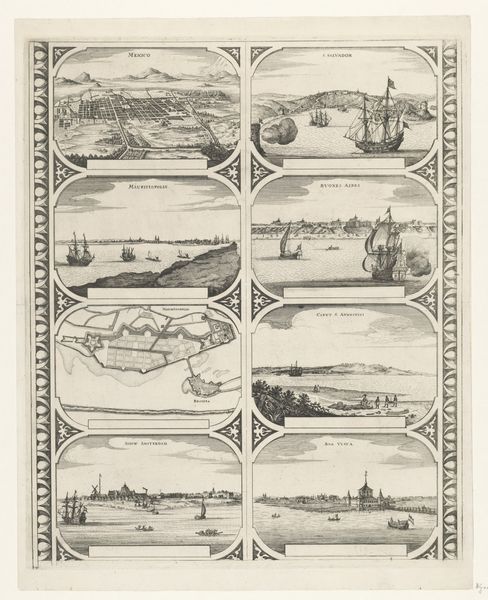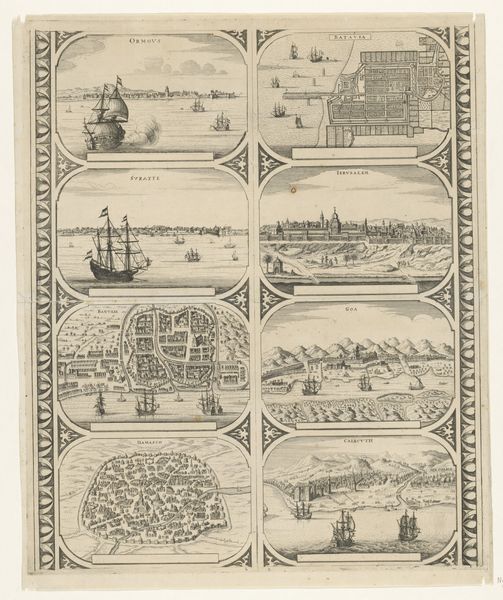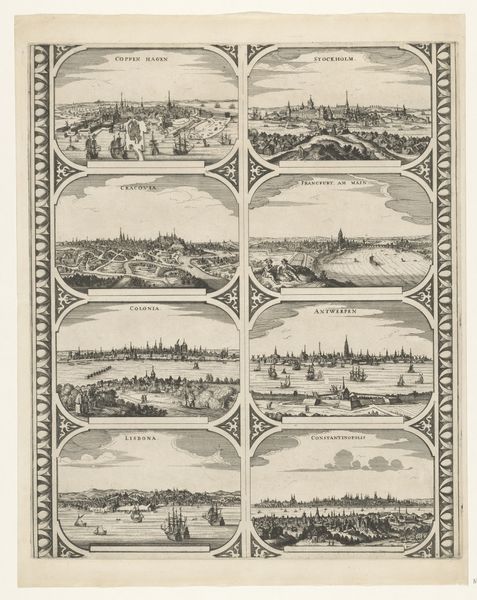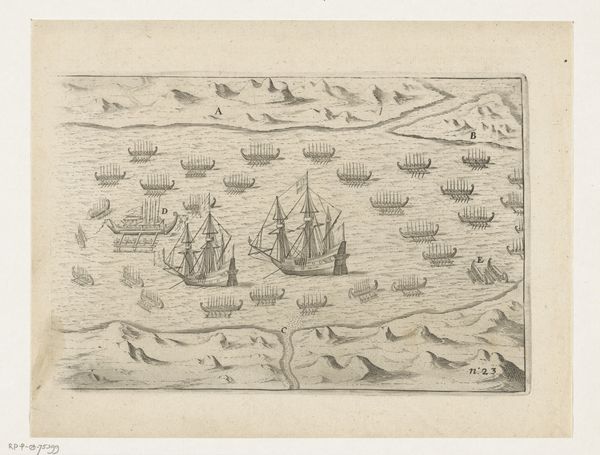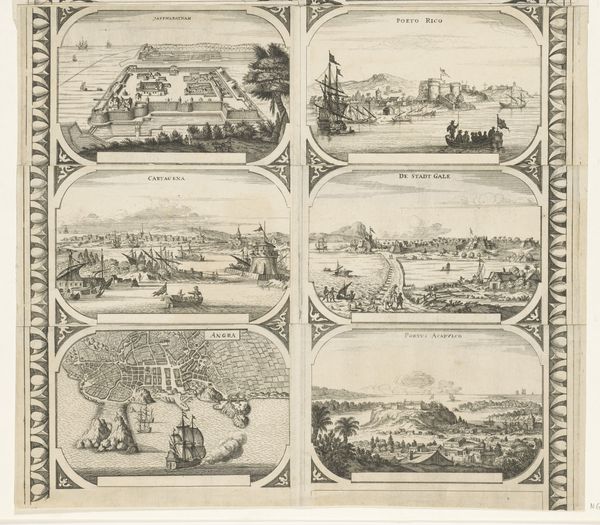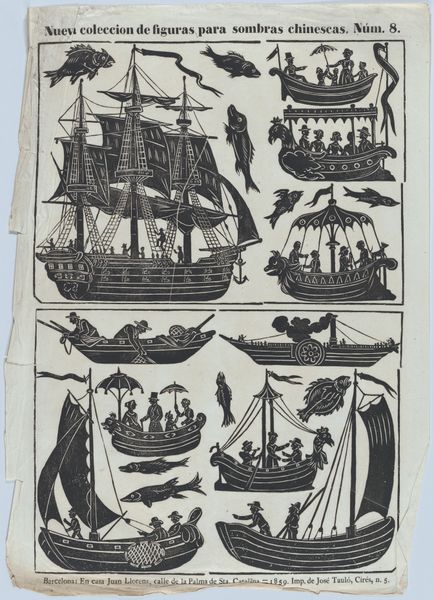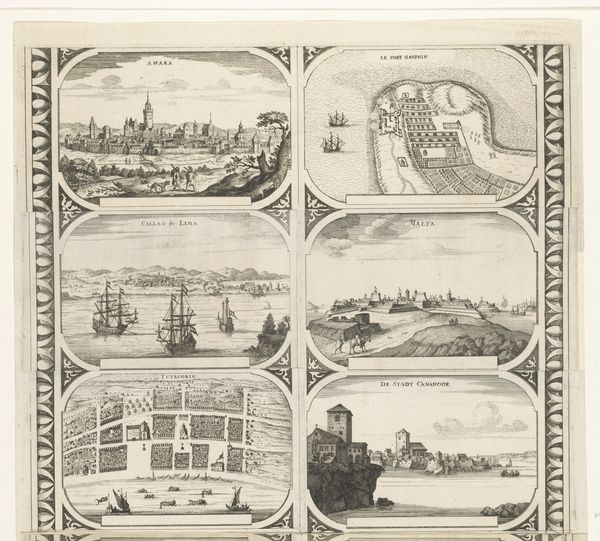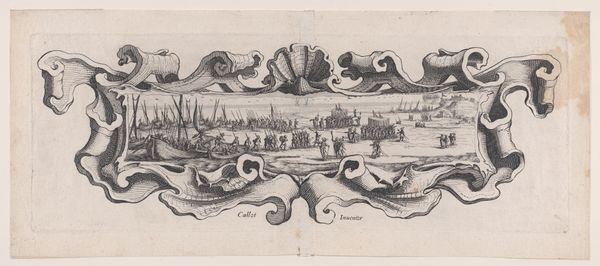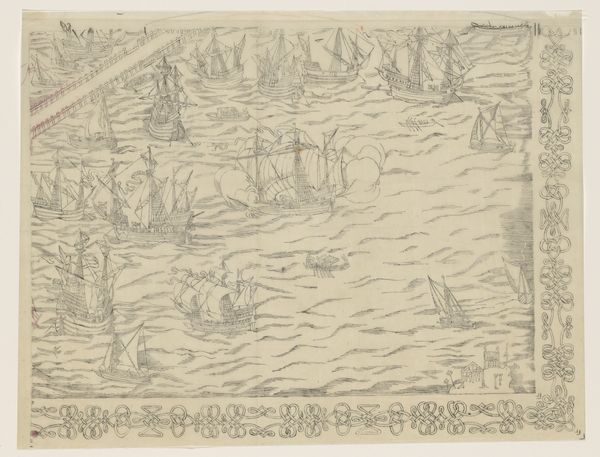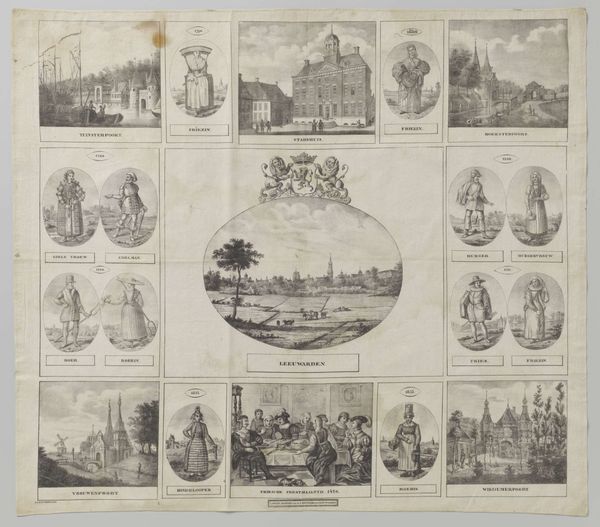
Alexandria in Egipt / Algiers / Tvnis / Oran / Alcair / Malta / Cevta / Tripoli in Barbaria 1670 - 1672
0:00
0:00
print, etching, engraving
#
aged paper
#
toned paper
#
baroque
#
mechanical pen drawing
# print
#
pen sketch
#
etching
#
old engraving style
#
landscape
#
personal sketchbook
#
pen-ink sketch
#
pen work
#
sketchbook drawing
#
cityscape
#
sketchbook art
#
engraving
Dimensions: height 515 mm, width 426 mm
Copyright: Rijks Museum: Open Domain
Curator: Here we have a print from between 1670 and 1672, created by an anonymous artist. It's an etching and engraving, depicting cityscapes like Alexandria, Algiers, and Tunis, all framed within decorative borders. Editor: It gives off an orderly, almost regimented feel, despite the detail within each cityscape. The limited tonal range and repetitive framing devices lend a certain detachment. Curator: These cities, primarily coastal, held strategic importance for trade and naval power during that era. Consider how the Dutch, who possessed the print, viewed these North African and Mediterranean locations. They represent access, both to markets and potentially to conflict. Editor: The ships are recurring symbols, almost emblems of ambition and connection. The wind also seems key. What is its cultural resonance here? Curator: Absolutely. The billowing sails become symbols of exploration and mercantile expansion. This piece provides insight into the burgeoning global trade networks and Dutch maritime aspirations during the Baroque period. The windmill suggests resources and processing, also a node of civilization. Editor: But, the depiction feels somewhat sanitized, don't you think? As an Iconographer, I notice what *isn’t* shown. We see cities but little about the lives within them; it focuses on geographical layout. Curator: It served practical purposes, a cartographical overview intended to catalogue. It is important to recognize the lack of the experience of lived reality because those are precisely the biases to address. However, one shouldn’t ignore its artistic merit. The fine line work gives clarity, presenting these distant locales in an accessible manner. Editor: Even with that attention to detail, the cities share certain features: coastal positioning, architecture, fortified structures. Do you believe that this repetition was a product of artistic limitation? Curator: It speaks to a common visual language being used. Note, that in that era, visual representation was often tasked to deliver objective documentation. Its aesthetic elements, like composition, add depth, as does the iconographic relevance, hinting at both the aspirations and the limitations of the era. Editor: This perspective underscores a crucial balance – respecting the artwork's place in history, while remaining vigilant about how it might mirror historical power dynamics and modes of thought.
Comments
No comments
Be the first to comment and join the conversation on the ultimate creative platform.


